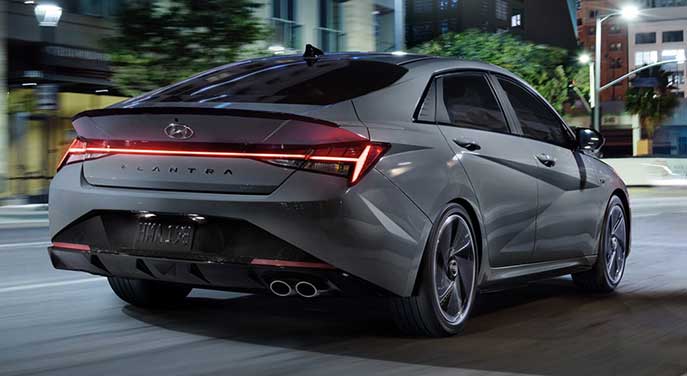 Every car manufacturer, it seems, needs to inaugurate a performance division of their products to truly validate themselves. What some call a skunk works, where the company’s technological and engineering prowess is on full display. BMW has its “M” series, Nissan NISMO, Toyota has TRD, Ford has its Ford Performance Racing, Mercedes has AMG, and so on.
Every car manufacturer, it seems, needs to inaugurate a performance division of their products to truly validate themselves. What some call a skunk works, where the company’s technological and engineering prowess is on full display. BMW has its “M” series, Nissan NISMO, Toyota has TRD, Ford has its Ford Performance Racing, Mercedes has AMG, and so on.
And the primary goal of each and every one is to make cars – and trucks – that go faster, handle better, look cooler, and deliver more in the way of driving kicks than the garden variety, mainstream products found in the rest of the company’s line-up. Not to mention adding to the company’s bottom line.
Hyundai is no exception and has what they call the “N Line,” with an upgraded series known simply as the “N”. I recently spent some time in the Elantra N version.
| Click images for larger view |
 |
 |
| Related Stories |
| Low-priced Hyundai Venue includes lots of goodies
|
| Plenty right with the Hyundai Ioniq 5 – if you can wait
|
| 2022 Hyundai Santa Cruz is an intriguing pickup/SUV hybrid
|
| MORE AUTO REVIEWS |
Aside from a slew of exterior embellishments and styling upgrades – glitzy 18-inch wheels, dual exhaust system, trunk spoiler, and front and rear LED head/taillights – what separates the N from the mainstream Elantra is a lively 2.0 turbocharged engine that develops some 276 horsepower.
This is considerably more than the normally aspirated, 147-horsepower 2.0-litre four-banger found in regular Elantras, and it’s mated to an eight-speed, dual-clutch transmission or a six-speed manual. I had the eight-speed, a very rapid pocket rocket that is perfect for boy and girl racers who want that extra bit of snap and like to embarrass Porsche and BMW owners. One rather cool little feature here is an “active sports exhaust” system that can be adjusted and will give you – and I quote – more “snap, crackle, and pop,” should you choose.
The only fly in the ointment is the transmission I mentioned above, which seems hesitant and imprecise. It doesn’t seem to like low-speed traffic, where frequent gear changes are the norm. Parking the Elantra N is more of a challenge than it should be. On the other hand, it will deliver a combined fuel economy of 10.2 litres per 100 km, which is decent for a performance sedan. Not outstanding, but decent.
The cloth/leather buckets come with attractive red piping. Hyundai has done a nice job with the seats, which, I’m happy to report, are not the tortuous, back pain-inducing implements of suffering so often found in vehicles of this type. They’re heated, of course, and have a series of power adjustment controls. Sporty, but not too sporty. And unlike some other manufacturers, Hyundai has decided not to make the controls and switchgear as user-unfriendly as possible. I actually got along with the sound system.
As to handling and performance, the N would probably fall short if you really pressed it on a track. The dual-clutch transmission would let you down, and the suspension is tauter than usual, but not race-car handling taut. For street corner carvers and weekend warriors, it’s fine, but not over the top.
Safety-wise, it’s right in the middle of the pack. Things like lane departure warning, blind spot collision avoidance, rear cross-traffic collision avoidance, driver attention warning, and all the other nanny features are all standard equipment. It also has a hill-start assist feature, which seems redundant in an automatic-transmission vehicle, but there you go.
The overall flavour of the Elantra N is that of a nicely tweaked sedan that gives you a little more visual impact, a definite power boost, and a slightly more exclusive presence than the mainstream Elantra. It’s a definite step up in the performance department, but everything is under control.
And, of course, it comes with an appropriate price tag. My Amazon Grey N tester was priced at just over $39,000 before taxes and extras, which, compared to the $22,750 sticker price of a basic Elantra, is a bit of a jump. That said, the Elantra N-Line starts at just over $32,000.
If you can find one. Like other auto manufacturers, Hyundai is experiencing supply chain issues. Says the company: “…we are currently experiencing low inventory on many of our models due to the limited supply of certain components. As a result, delivery times on some of our vehicles are longer than usual.”
Ted Laturnus has been an automotive journalist since 1976. He was named Canadian Automobile Journalist of the Year twice and is past president of the Automobile Journalists Association of Canada (AJAC).
For interview requests, click here.
The opinions expressed by our columnists and contributors are theirs alone and do not inherently or expressly reflect the views of our publication.
© Troy Media
Troy Media is an editorial content provider to media outlets and its own hosted community news outlets across Canada.

